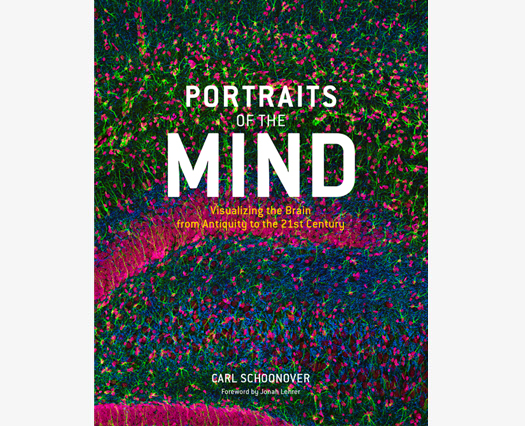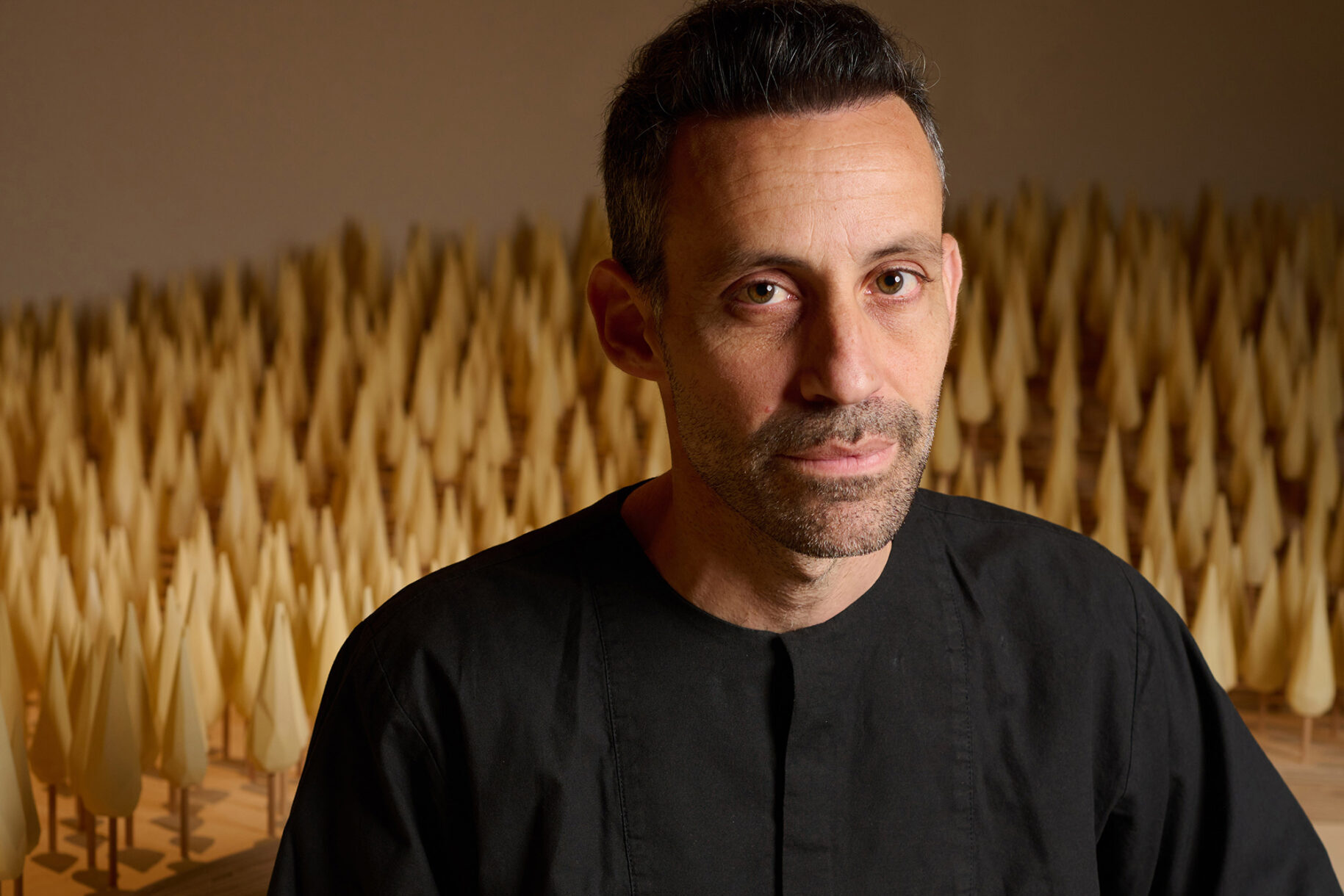Media • Science • Technology

December 13, 2010
Portraits of the Mind

Cover of Portraits of the Mind: Visualizing the Brain from Antiquity to the 21st Century, by Carl Schoonover. Published by Abrams
Take a brain out of its skull, cut a thin slice, examine it under a microscope and you will see nothing but grey, barely differentiated matter. You might be astonished then, as late nineteenth anatomists were, to discover that when treated in the right manner the blank slate contains a universe teaming with small parts, thousands upon thousands of lines wrapping around each other in terrifyingly convoluted patterns. Out of that serene gray the central challenge of neuroscience arises: the organ in our heads is of such monumental complexity that our feeble minds alone cannot make sense of the whole.
The history of neuroscience, then, is the history of the techniques researchers have employed to delve into the brain. The entire edifice of knowledge, our very ability to pose questions about the nervous system and its relationship to the mind, depend on the tools and methods contrived to interact with them. These methods, some exceedingly elegant in conception, illuminate for us what our eyes and minds fail to pick out unaided.
Without these methods science cannot exist. Every publication includes a dedicated section, sometimes pages long, describing in detail how the experiments summarized in the article were performed. Even by the modern standards of scientific communication — often noted for its dry, objective tone — the so-called “methods section” is virtually platonic in its purity and remove. Sometimes I speculate that this stems from some unconscious desire to preserve the romantic notion of science as a wholly objective, unassailable, superhuman enterprise. Whatever the reason, the manipulations as described in the methods section are invariably performed by a nameless, faceless third-person passive-form agent. One would be forgiven for wondering whether the procedures occurred overnight, ex nihilo, to the elation of a team of flesh-and-blood researchers who strolled into the lab the next morning to discover the findings neatly summarized on their desks.
Despite the formal and narrative weaknesses of the methods section, it stands at the heart of any empirical enterprise, yet is oddly overlooked in most popular accounts of scientific adventure. Experiments succeed or fail on the strength of the techniques employed to perform them. The reliability of the data — its known knowns, its known unknowns, its unknown unknowns, as they say — is only as good as the weakest link in the sequence of events that generated it.
This sequence, this craft, can be the fruit of decades of experience transmitted from mentor to student, and from lab to lab. Those who deploy the most powerful techniques are licensed to ask the most powerful questions with them. Occasionally, a new set of revolutionary methods opens up space in a field — sometimes even birthing an entire new branch — where previously there had been nothing but darkness. And occasionally the ideas underlying a technique are so exquisite, so breathtaking in their conception, that I find myself contemplating them for themselves alone, irrespective of the data they may (or fail to) produce. The model here is Sol LeWitt’s famous summary (“the idea becomes a machine that makes the art”) that argues for an aesthetic appreciation of concept on equal footing with that of the thrilling of our senses by the physical object. I propose then, that in science as in art we should delight not only in the physical manifestations of beautiful data but also in the ideas that made them.
My recently published book, Portraits of the Mind: Visualizing the Brain from Antiquity to the 21st Century (Abrams) documents this overlooked dimension over two millennia of obsession with the brain, through roughly one hundred images of actual data from laboratories around the globe. An extended caption that accompanies each image describes the means by which these results have been teased out of the grey slate. These captions, in conjunction with short essays from experts across the field, examine prior scientific upheavals fueled by the development of as many new ways of peering inside; and chronicle a series of very recent technical developments that many researchers hope will soon yield a revolution in the study of brain and mind.
Observed
View all
Observed
By Carl Schoonover
Related Posts

Sustainability
Delaney Rebernik|Books
Head in the boughs: ‘Designed Forests’ author Dan Handel on the interspecies influences that shape our thickety relationship with nature

Design Juice
L’Oreal Thompson Payton|Books
Less is liberation: Christine Platt talks Afrominimalism and designing a spacious life

The Observatory
Ellen McGirt|Books
Parable of the Redesigner

Books
Jennifer White-Johnson|Books
Amplifying Accessibility and Abolishing Ableism: Designing to Embolden Black Disability Visual Culture
Recent Posts
Courtney L. McCluney, PhD|Essays
Rest as reparations: reimagining how we invest in Black women entrepreneurs Food branding without borders: chai, culture, and the politics of packaging Why scaling back on equity is more than risky — it’s economically irresponsible Beauty queenpin: ‘Deli Boys’ makeup head Nesrin Ismail on cosmetics as masks and mirrorsRelated Posts

Sustainability
Delaney Rebernik|Books
Head in the boughs: ‘Designed Forests’ author Dan Handel on the interspecies influences that shape our thickety relationship with nature

Design Juice
L’Oreal Thompson Payton|Books
Less is liberation: Christine Platt talks Afrominimalism and designing a spacious life

The Observatory
Ellen McGirt|Books
Parable of the Redesigner

Books
Jennifer White-Johnson|Books

 Carl Schoonover is a neuroscience PhD candidate and National Science Foundation graduate fellow at Columbia University and the author of
Carl Schoonover is a neuroscience PhD candidate and National Science Foundation graduate fellow at Columbia University and the author of